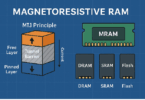Europe – Solar Power Technology – Tandem Cells
Though Europe had incorporated solar power technology to the point where an eclipse could cause mild panic, efficiency of solar cells still remains a mere 25% which is a lot of free energy that is not reaped. Research conducted in the past has shown that abundant of mineral called perovskite was the solution to the poor performance of solar cells. Presently a team of scientists from Stanford University and Massachusetts Institute of Technology – MIT have put the theory into action by creating tandem silicon perovskite solar cells. At times known as multi-junction cells, Tandem Silicon Perovskite Solar Cells comprises of more than one semiconductor material which have the capabilities to enhance efficiency, substantially, though their use is very limited due to manufacturing complication as well as high cost.
The team have focused on these designs since they were of the belief that there could be a great deal of scope for improvement. Perovskite is considered to be a crystalline organometal mineral which can be developed economically in the lab and exists also in geological deposits all across the world and scientist are aware that it has light absorbing as well as semiconductor properties for ages. However, it was first used in solar cells in 2009 only and the main advantage of using perovskite in solar cell can be integrated in layer as thin as one micrometre.
Connection between Silicon/Perovskite
The tandem cells which were developed for this experiment incorporated advances in manufacturing tech also in improving the connection between silicon as well as perovskite layers and this connecting layer or `tunnel junction’ was composed of heavily doped p-type of silicon which makes the energy barrier between two layers to zero.
With added titanium dioxide layer, it enables electrons from the Tandem Silicon Perovskite solar cell to freely flow in the silicon tunnel junction where it is recombined with the electrons from the silicon panel. Tandem Silicon Perovskite Solar Cells based on perovskite and silicon has the potential of absorbing a large segment of solar energy and tandem solar panels prefers these minimizes, a phenomenon called thermalization which is the result when the energy of photons is released as heat in a solar cell till it reaches the absorbing material’s bandgap.
Refining Perovskite layer/Advanced Silicon Solar Cell – Better Results
While silicon is good at absorbing photon to the top of solar energy spectrum or high badgap; perovskite is proficient in taking photons from the lower infrared segment or lower bandgap and these specific absorbing layers could convert the sun’s light to electricity which could be much more efficient than a single absorber could do. From the point of view of observed efficiency, the cells in the experiment performed at the top of the predicted range and the individual silicon together with the perovskite designs utilised were not of the advanced nature though it showed an increase in efficiency. A Tandem Silicon Perovskite solar cell was stacked on top of a mid-range silicon cell having an efficiency of 12.7 percent with an efficiency of 11.4 percent and the tandem cell was capable of reaching 17 percent which was a 50% increase Researchers are of the belief that refining the perovskite layer and utilising more advanced silicon solar cells could provide better results in the future.






